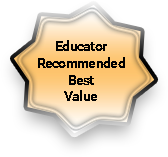The No Limits Method®
Digital Lessons
*Includes 36 courses
A uniquely enhanced approach... a catalyst to advance exceptional education, the No Limits Method® connects brain, body, and environment.
- 36 digital video lessons
- Resources, materials, and assessments for each lesson
- TD Snap and Boardmaker integration

